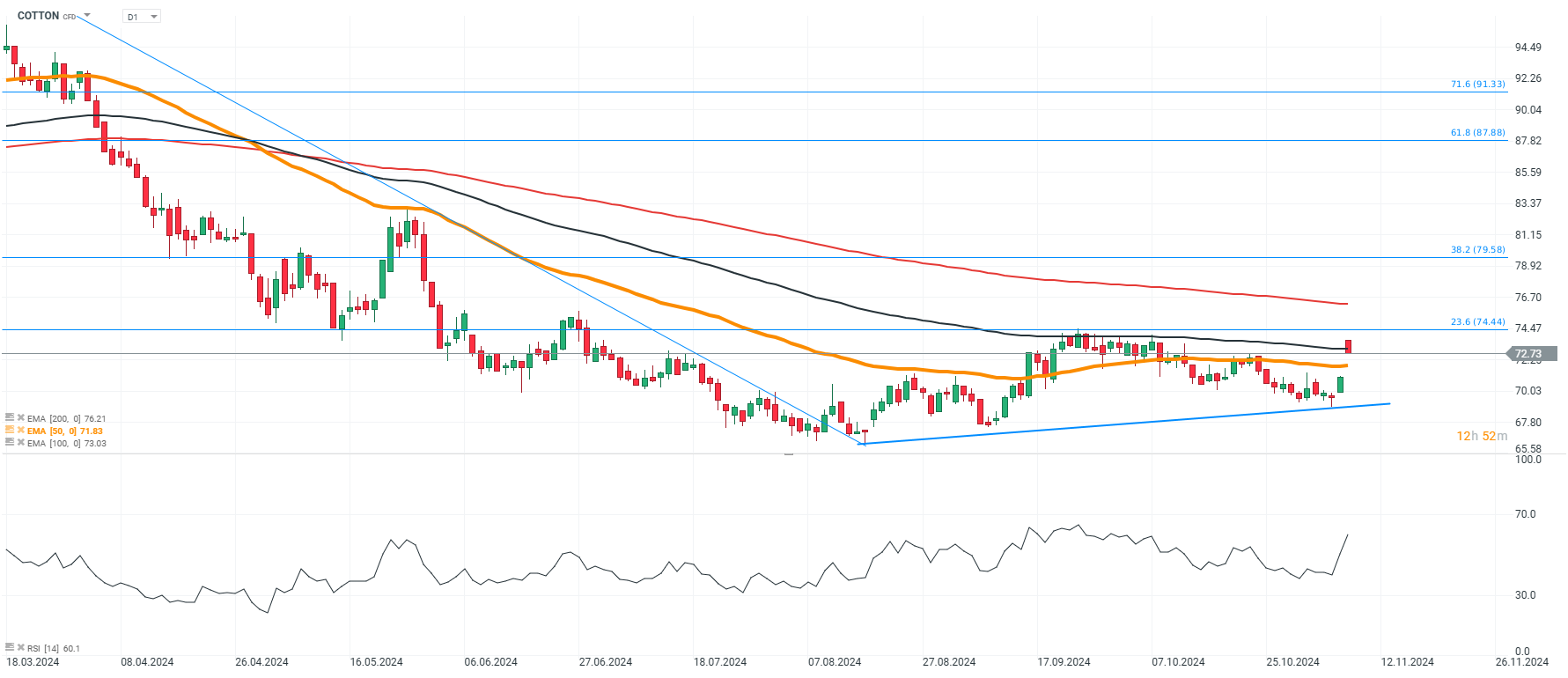Cotton futures (COTTON), traded on ICE, have fallen sharply in recent weeks, testing levels below psychological support at $70 per bale. The rally has been halted by an unfavorable mix of factors in the form of lower-than-expected crop damage estimates from hurricanes, sizable supply from Brazil and a strengthening dollar, with lower oil prices at the same time. Increase on cotton price today is related to rollover.
- At 5 PM GMT, we'll learn the monthly USDA WASDE report, which will tell us more about estimated ending stocks, as well as cotton production and yields (and other grains like wheat, corn, and soybeans). WASDE expectations indicate that cotton planted area for 2025/26 will be 10.8 million acres, up from 10.974 million this year.
- An additional factor that could affect cotton futures is the performance of the Chinese stock market, which is strongly linked to the health of the local economy. Further improvement in the country's data, with the prospect of fiscal stimulus, and with lower production expected in the US, could support a trend change scenario.
- The Fed's rate cut of another 25 bps and the prospect of further cuts in the US and a slightly weaker dollar 'coming off' local highs helped cotton. On the other hand, however, today's drop in oil prices again puts a question mark over a further rebound in cotton, and unless the WASDE report (which is expected to show a rather small drop in production) surprises clearly 'in favor', pressure for a retest of $70 per bale is not ruled out.
- Low oil prices continue to make large textile companies prefer polyester, and the biggest fundamental change in the market (which has yet to materialize) could be a rebound in the Chinese economy, significantly lifting oil prices as well as global cotton demand.
- The latest CoT raprot showed that both producers (Commercials) and speculators (Managed Money) are maintaining large short positions on cotton, and the second group has increased it quite significantly. The position structure of the largest traders (4 or less) suggests a statistically high concentration of short positions (18.7%) in this group, which may be adding pressure to cotton prices - both managers and hedgers are choosing to 'hedge' against falling prices.

U.S. cotton ending stocks are historically low, and a change in demand conditions for the better globally would likely bring sizable price increases. Source: Bloomberg Finance L.P.
COTTON chart (D1 interval)
Cotton futures test EMA100 (black line) after rising above EMA50 (orange line) earlier today. The major resistance zone is set at $74.5 per bale (23.6 Fibo of the recent, the biggest downward impulse).

Source: xStation5
Daily Summary: End of the week in the red, tech rally waning
🔝Silver Jumps 10% Weekly, up 120% YTD
Chart of the day - SILVER (12.12.2025)
Daily summary: SILVER at a new ATH, EURUSD at its highest since October


